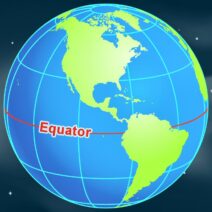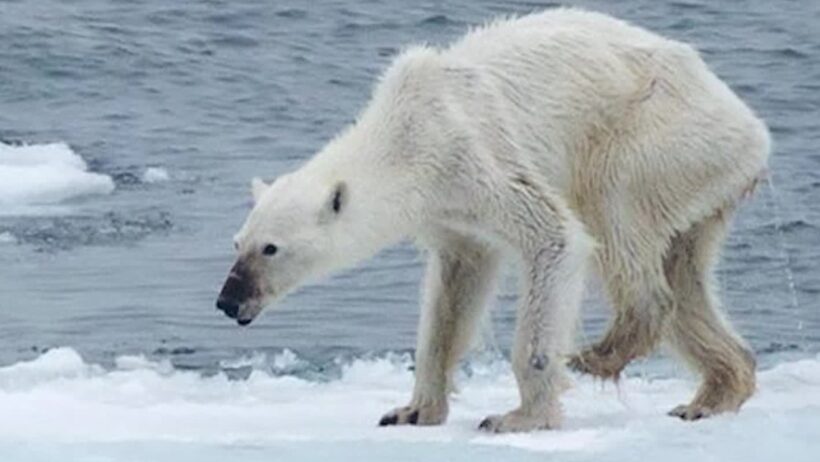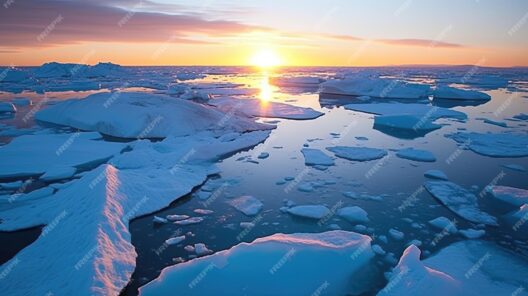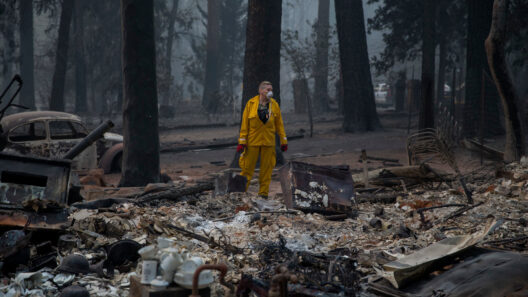Antarctica and the Arctic are often viewed as the Earth’s final frontiers, vast expanses of frozen wilderness teeming with unique ecological wonders. However, the veil of this pristine environment is being lifted, exposing the grave reality of climate change. Global warming is not a distant problem; it has been persistently inching toward us, leaving a trail of irreversible damage in its wake. While the general populace might feel a sense of detachment from these remote locales, understanding their plight offers a critical window into the broader implications of climate change.
The polar regions, comprising both the Arctic and the Antarctic, serve as crucial indicators of our planet’s health. Their icy landscapes are not isolated, but rather intricately intertwined with the global climate system. The polar regions reflect sunlight, regulate ocean currents, and store immense amounts of carbon dioxide. However, as temperatures rise, these regions are experiencing unprecedented transformations that pose alarming consequences.
In recent decades, both the Arctic and Antarctic have exhibited a striking increase in temperature. The Arctic, in particular, is warming at a staggering rate—approximately twice as fast as the global average. This phenomenon, known as Arctic Amplification, occurs because sea ice, once a reflective surface, is now being replaced by darker ocean waters that absorb more heat. As this process continues, it establishes a feedback loop that further accelerates warming. The consequences of this change are dire: as ice retreats, habitats for species like polar bears and seals shrink, threatening their survival.
The plight of the emaciated polar bear poignantly exemplifies this crisis. These majestic creatures, which rely on sea ice to hunt seals, are being forced to swim greater distances to find food. Starvation is becoming increasingly common, leading to a decline in their populations. But the plight of polar bears is merely a fraction of the broader ecological meltdown unfolding in the Arctic.
In the Antarctic, the situation is equally grim. The West Antarctic Ice Sheet is particularly vulnerable, showing signs of destabilization. If it were to collapse entirely, global sea levels could rise by more than three meters, inundating coastal cities and displacing millions. The consequences extend beyond mere geography—ecosystems that have evolved over millennia face unparalleled disruption. The intricate weave of life, from krill to emperor penguins, is delicately balanced; with climate change, that balance is at a precipice.
One of the most startling implications of warming in these polar regions is the release of greenhouse gases trapped in permafrost. As permafrost thaws, it releases vast amounts of methane, a gas approximately twenty-five times more potent than carbon dioxide over a century. This introduces a dangerous feedback loop in the climate system, further exacerbating global warming. The Arctic is not simply an isolated case; it is a crucial component of Earth’s regulatory patterns, and its degradation demands urgent action.
The changes in temperature and ice levels also have severe repercussions for ocean circulation patterns—processes that are fundamental to regulating the Earth’s climate. The Interconnectedness of the climate system means any alterations in the polar regions can influence weather patterns globally. Anomalies such as extreme heatwaves, intense storms, and prolonged droughts can be traced back to the disturbances occurring in these icy regions. This interconnectedness serves as a clarion call for comprehensive climate action, emphasizing that we cannot afford to protect the poles in isolation.
Human impacts exacerbate these environmental stresses further. Commercial fishing, oil drilling, and shipping routes are encroaching upon previously protected areas, introducing pollutants and competing for the limited resources available. The specter of industrialization looms over these fragile ecosystems, amplifying the already dire consequences of climate change. The unique biodiversity of the poles is not merely an innocuous backdrop; it contains invaluable genetic resources and serves as a crucial player in Earth’s ecosystem services.
Curiosity often sparks change. When individuals grasp the stark realities of climate change’s effect on polar regions, it can inspire a collective shift in perception. The implications reach beyond the rapidly melting ice; they affect human livelihoods, cultural identities, and the future of our planet. Understanding how interlinked human actions are with these pristine environments can galvanize efforts towards sustainability and conservation.
Solutions must anchor themselves in science, grounded in the contemporary understanding of climate dynamics. Transitioning to renewable energy, advocating for sustainable fishing practices, and enforcing stringent regulations on industrial activities are integral steps in the right direction. Mitigation is essential, but so is adaptation—communities must be equipped to handle the repercussions of changes that are already set in motion.
The cry for action resonates beyond the borders of the polar regions. It is a clarion call for global solidarity and shared responsibility. Only through collective dedication can we address the unsustainable trajectory we find ourselves on. The fate of Antarctica and the Arctic serves as a stark reminder of our responsibility not only to these regions but also to the generations that will inherit this planet.
In conclusion, global warming poses a multifaceted threat to the polar regions, with implications that reverberate throughout our global ecosystem. As their ice retreats, revealing the stark realities of climate change, we must pivot our perspective and harness our curiosity into actionable change. Acknowledging the fragility of these environments is not just an environmental concern but a human one, necessitating a unified response to preserve the splendor and integrity of our planet for future generations.





